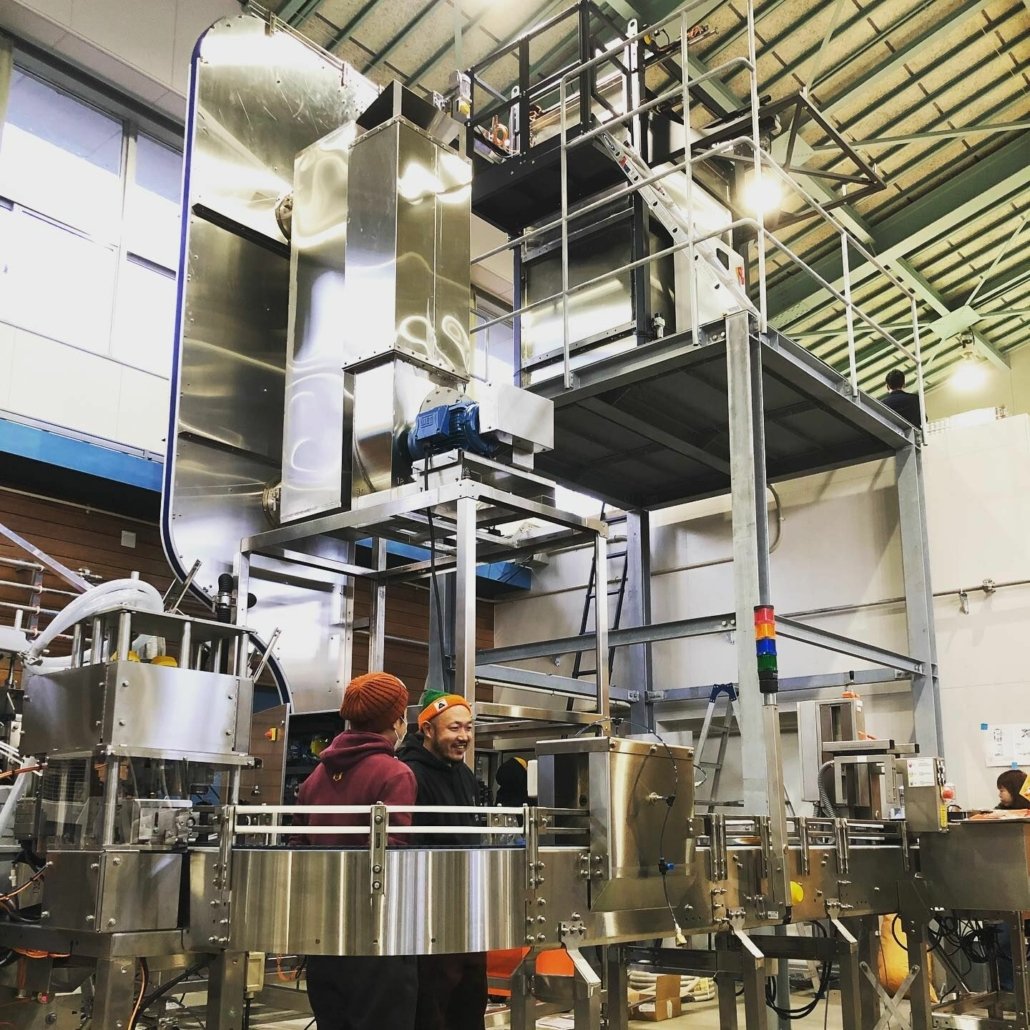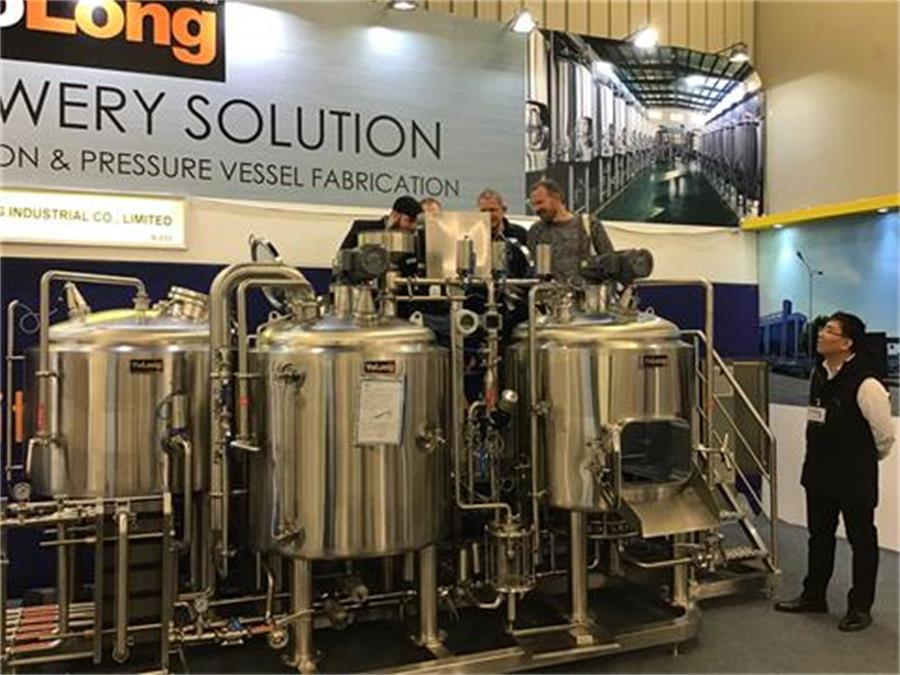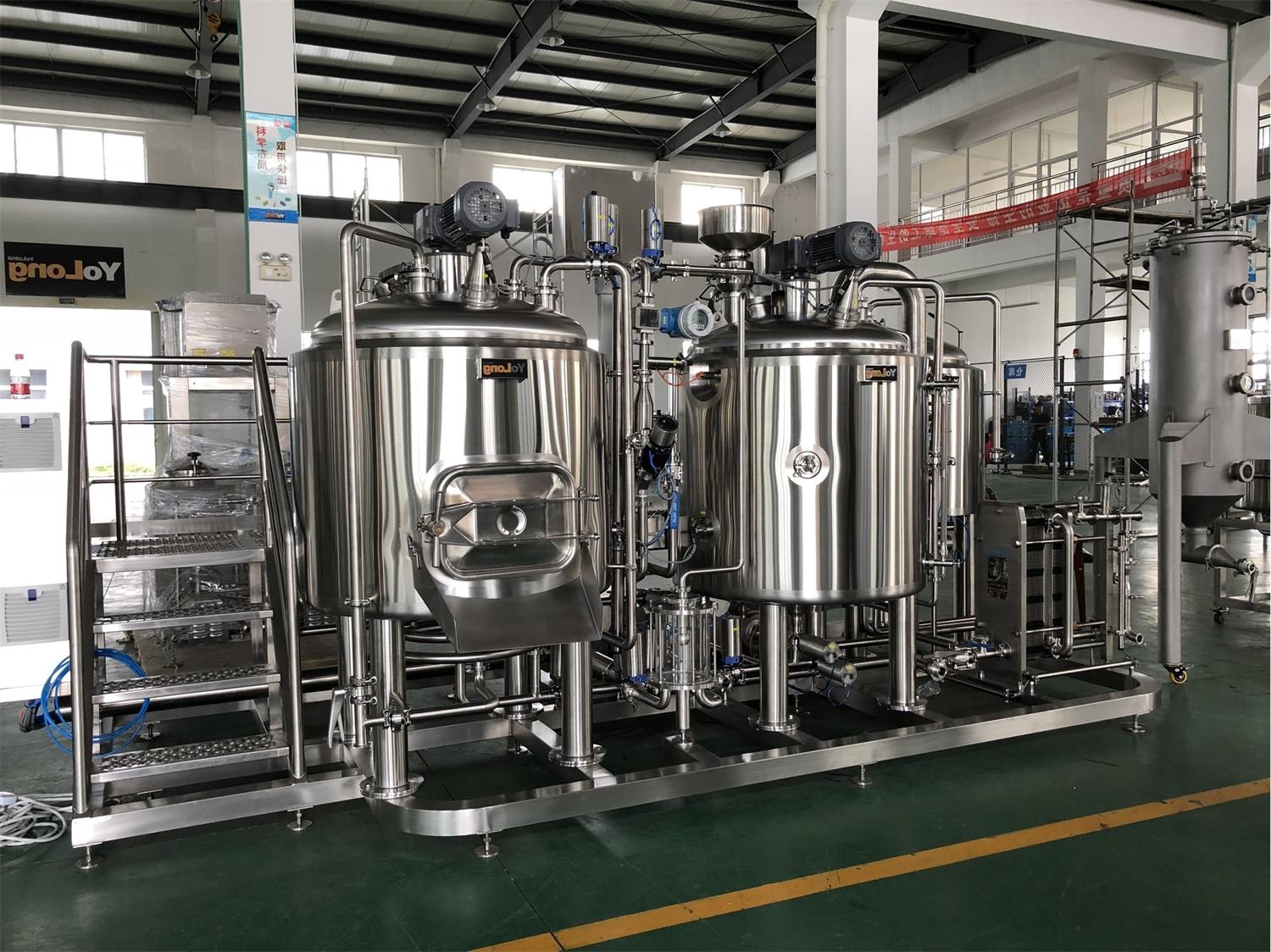Conical Fermentation Tanks
Fermentation is at the heart of beer brewing, and one of the most effective tools in the craft brewer’s arsenal is the conical fermentation tank. These specialized tanks are designed to improve the efficiency and quality of fermentation processes, resulting in superior brews. This article will delve deep into the world of conical fermentation tanks, providing you with everything you need to know, from an equipment guide to pricing, suppliers, and more.
We’ll guide you through the brewing process, explain the advantages of these tanks, and provide detailed tables for easier comparison. Whether you’re a homebrewer looking to upgrade or a commercial brewer setting up a new facility, this comprehensive guide is for you.

Key Details of Conical Fermentation Tanks
Conical fermentation tanks have revolutionized the brewing process, offering both home and commercial brewers improved yeast management, ease of use, and better control over the final product. Their key feature is a cone-shaped bottom, which allows for easy separation of yeast and trub (sediment) from the liquid. This process not only simplifies the brewing process but also enhances the quality and clarity of the beer.
What Are Conical Fermentation Tanks?
Conical fermentation tanks, often made from stainless steel, are vessels used during the fermentation phase of brewing. Their unique cone-shaped bottom is designed to collect yeast and sediment, making it easy to remove or reuse them. This design helps brewers avoid the hassle of transferring beer between containers, which reduces contamination risks and oxidation.
Key Features:
- Material: Most conical fermentation tanks are made from stainless steel, which is non-reactive, easy to clean, and durable.
- Shape: The cone-shaped bottom separates yeast and sediment from the beer.
- Ease of Use: These tanks simplify fermentation by allowing for direct collection of yeast, reducing the need for transfers between containers.
- Sizes: Conical fermentation tanks come in various sizes, from small homebrew tanks (5–10 gallons) to large commercial tanks (10 barrels and up).
Why Use Conical Fermentation Tanks?
Compared to traditional flat-bottom fermenters, conical tanks offer several advantages:
- Efficient Yeast Harvesting: The conical bottom allows for easier separation of yeast and trub.
- Reduced Contamination Risk: By reducing the need for transfers between vessels, conical tanks lower the risk of oxidation and bacterial contamination.
- Enhanced Beer Quality: These tanks provide better control over fermentation, which can result in cleaner, more refined beer.
Now, let’s break down the equipment guide and explore the various options available.
Equipment Guide for Conical Fermentation Tanks
Choosing the right conical fermentation tank depends on your brewing goals. Whether you’re brewing at home or running a commercial operation, understanding the specifications of different equipment will help you make the best decision.
| Type of Equipment | Description |
|---|---|
| Homebrew Conical Fermentation Tanks | Smaller tanks, typically made of stainless steel or plastic, designed for homebrewers producing 5 to 15 gallons of beer. |
| Commercial Conical Fermentation Tanks | Larger tanks, usually made of stainless steel, designed for breweries producing beer in batches ranging from a few barrels to 100 barrels or more. |
| Plastic Conical Fermenters | More affordable than stainless steel options, but less durable and harder to clean. They are often used by homebrewers or small-scale brewers. |
| Stainless Steel Conical Fermenters | Durable, easy to clean, and long-lasting. They are used by both homebrewers and commercial brewers due to their superior quality and resistance to contamination. |
| Pressure-Rated Conical Tanks | These tanks can withstand higher pressures, making them ideal for more advanced brewing techniques, such as pressure fermentation or carbonating beer in the tank itself. |
| Cooling Jacketed Conical Tanks | Equipped with a cooling system to maintain precise fermentation temperatures, making them ideal for commercial brewers or homebrewers seeking more control over fermentation. |
Choosing between these options depends on factors such as brewing volume, budget, and desired control over the brewing process. Let’s take a deeper dive into some specific aspects of conical fermentation tanks.
Understanding the Brewing Process with Conical Fermentation Tanks
How Conical Fermentation Tanks Work
The fermentation process is where the magic happens. Once the wort has been brewed and cooled, it’s transferred to the fermentation tank, where yeast is added. Yeast feeds on sugars in the wort, producing alcohol and carbon dioxide. This fermentation process can last anywhere from a few days to several weeks, depending on the style of beer.
In conical fermentation tanks, the yeast and other solid matter naturally settle into the cone-shaped bottom, making it easy to remove them from the beer. This separation is essential for ensuring the final product is clean and free of unwanted sediment.
The Brewing Process with a Conical Fermentation Tank:
- Wort Transfer: After boiling, the cooled wort is transferred to the conical fermentation tank.
- Yeast Addition: Yeast is added, and fermentation begins.
- Fermentation: Over several days to weeks, yeast converts sugars into alcohol and carbon dioxide.
- Sediment Separation: Yeast and trub settle at the bottom of the cone, allowing for easy removal.
- Secondary Fermentation (Optional): Some brewers choose to conduct a secondary fermentation in the same tank.
- Carbonation and Finishing: The beer can be carbonated and finished in the same vessel before being transferred to kegs or bottles.
Capacity, Space, Design, and Layout of Conical Fermentation Tanks
When planning your brewery layout, it’s crucial to consider the size and capacity of your conical fermentation tanks, as well as the space they will require. Below is a table outlining various options based on capacity, space requirements, and design considerations.
| Tank Capacity | Ideal for | Space Requirements | Design and Layout |
|---|---|---|---|
| 5–15 gallons (Homebrew) | Homebrewers producing small batches | Requires minimal space; can fit in most homebrewing setups | Typically cylindrical, with basic stainless steel or plastic construction. |
| 1–5 barrels (Small Craft Breweries) | Small commercial breweries and brewpubs | Requires a dedicated brewing space, with room for multiple tanks if scaling up | Often fitted with cooling jackets, sight glasses, and sampling ports for better control of the brewing process. |
| 10–30 barrels (Medium Breweries) | Mid-sized commercial breweries | Requires larger brewing spaces; tanks may need to be installed vertically for space optimization | Stainless steel, jacketed tanks with temperature control, sight gauges, and pressure ratings. |
| 50+ barrels (Large Breweries) | Large-scale production breweries | Requires a large facility with ample vertical space | Tall, cylindrical stainless steel tanks, often customized for specific brewery layouts and production goals. |
Tank capacity and design significantly impact brewing operations. Smaller tanks are perfect for experimentation or home brewing, while larger tanks are necessary for commercial operations. Choosing the right tank size and layout depends on your brewing scale and goals.
Suppliers and Price Range for Conical Fermentation Tanks
Prices for conical fermentation tanks can vary widely based on factors such as size, material, pressure rating, and whether the tank includes additional features such as a cooling jacket or pressure rating. Below is a table listing common suppliers and the general price range for different tank sizes.
| Supplier | Tank Size | Price Range | Features Offered |
|---|---|---|---|
| Ss Brewtech | 7-gallon to 5-barrel | $200 – $5,000 | Stainless steel, pressure-rated, and equipped with thermowells, sampling ports, and cooling jackets for certain models. |
| Spike Brewing | 5-gallon to 1-barrel | $500 – $3,500 | Customizable stainless steel tanks with pressure rating, cooling systems, and advanced features like CIP (Clean in Place). |
| Blichmann Engineering | 7-gallon to 10-barrel | $300 – $6,000 | High-quality stainless steel with pressure capabilities, sight glasses, and butterfly valves for easy yeast dumping. |
| Stout Tanks and Kettles | 1-barrel to 30-barrel | $1,500 – $25,000 | Offers fully customizable tanks with advanced fermentation control features such as glycol jackets and integrated CIP. |
Each supplier provides a range of options catering to different needs, from the budget-conscious homebrewer to the commercial brewer seeking top-of-the-line fermentation tanks. Comparing these options based on your brewing scale, available space, and budget is key.
Installation, Operation, and Maintenance of Conical Fermentation Tanks
Conical fermentation tanks require proper installation and ongoing maintenance to ensure they function optimally. Let’s break down the requirements for installation, day-to-day operation, and maintenance:
| Process | Description |
|---|---|
| Installation | Depending on the tank size, installation may require professional help, especially for larger tanks. Proper leveling and plumbing (for cooling jackets) are essential. |
| Operation | Operating a conical tank is fairly straightforward. The key tasks include monitoring temperature, pressure (if applicable), and removing sediment and yeast during fermentation. |
| Maintenance | Routine cleaning is vital. Tanks need to be sanitized after each batch, with particular attention paid to the cone where yeast and sediment collect. |
| Cleaning In Place (CIP) Systems | Many commercial conical tanks come with CIP systems that make cleaning easier by circulating cleaning solution through the tank without disassembly. |
By ensuring proper installation and following consistent operational and maintenance practices, brewers can maximize the lifespan of their equipment and produce high-quality beer batch after batch.
How to Choose a Conical Fermentation Tank Supplier
Selecting the right supplier for conical fermentation tanks is crucial for long-term success. Factors such as price, customer service, warranty, and customization options should all be considered when making a decision.
| Factors to Consider | Description |
|---|---|
| Reputation and Reviews | Look for suppliers with a proven track record and positive reviews from other brewers. |
| Customization Options | Depending on your brewing needs, you may require a tank with specific features like a cooling jacket or pressure capabilities. Make sure the supplier offers these customizations. |
| Price vs. Features | While it’s tempting to opt for the cheapest option, consider whether a more expensive tank offers features that could improve your brewing process or result in higher-quality beer. |
| Warranty and Support | Make sure the supplier offers a good warranty and provides after-sale support for installation and maintenance questions. |
| Lead Time and Availability | Some suppliers have long lead times for custom orders, so factor this into your purchasing decision, especially if you have tight deadlines for setting up your brewery. |
Advantages and Limitations of Conical Fermentation Tanks
Advantages of Conical Fermentation Tanks:
- Efficient Sediment Removal: The cone-shaped bottom makes it easy to separate yeast and trub from the beer.
- Reduced Risk of Contamination: No need to transfer beer between vessels, reducing exposure to air and bacteria.
- Yeast Harvesting: Yeast can be collected and reused for future batches, saving costs.
- Versatility: Tanks can be used for both primary and secondary fermentation, streamlining the brewing process.
Limitations of Conical Fermentation Tanks:
- Cost: Stainless steel conical fermenters are more expensive than traditional flat-bottom fermenters, especially for larger commercial setups.
- Space Requirements: Larger conical tanks require more vertical space, which could be a limitation in smaller brewing environments.
- Maintenance Complexity: While CIP systems simplify cleaning, conical fermenters still require diligent cleaning, especially in the cone area where yeast and sediment accumulate.

FAQs
| Question | Answer |
|---|---|
| What is a conical fermentation tank? | A specialized tank with a cone-shaped bottom that collects sediment and yeast, simplifying the fermentation process and improving beer quality. |
| Why choose a conical fermenter over a flat-bottom one? | Conical fermenters reduce contamination risks and make it easier to separate sediment, leading to clearer, better-tasting beer. |
| Are conical fermenters worth the investment? | Yes, especially for serious homebrewers and commercial brewers. The efficiency and quality improvements make conical fermenters a worthwhile investment. |
| What size conical fermenter should I buy? | For homebrewers, a 5–15-gallon tank is ideal. For commercial brewers, the size depends on the scale of production, with tanks ranging from 1 barrel to 100+ barrels. |
| How do I clean a conical fermentation tank? | Conical tanks should be cleaned with a suitable cleaning solution after each batch. Many commercial tanks come with CIP systems to simplify this process. |
Conclusion
Conical fermentation tanks are an essential tool for both home and commercial brewers, providing enhanced control, efficiency, and beer quality. While they may require a larger upfront investment and more space, their long-term benefits make them a key component of any serious brewing operation. By understanding the different types, sizes, and features available, as well as carefully choosing the right supplier, brewers can elevate their craft and produce exceptional beer consistently.
Share this entry
Interested in learning more about Brewing Systems including additional details and pricing information? Please use the form below to contact us!
YOLONG BREWERY EQUIPMENT FAQS
- Commercial Brewery / Craft Brewery / Microbrewery / Nanobrewery
- What is The Difference Between Craft Beer and Industrial Beer?
- The Bespoke Differences In Custom Brewing Systems
- Everything You Need to Know About Kettle Souring
- How to Choose Brewing Equipment for Your business?
- How To Choose The-Best Partner To Build Your Commercial Microbrewing System?
- Two Detection Sensors That You Need To Use In Your Brewhouse System
- Remote Control Applications in Brewing Equipment/How does it work?
- How To Clean Your Brand New Brewery Tanks?

